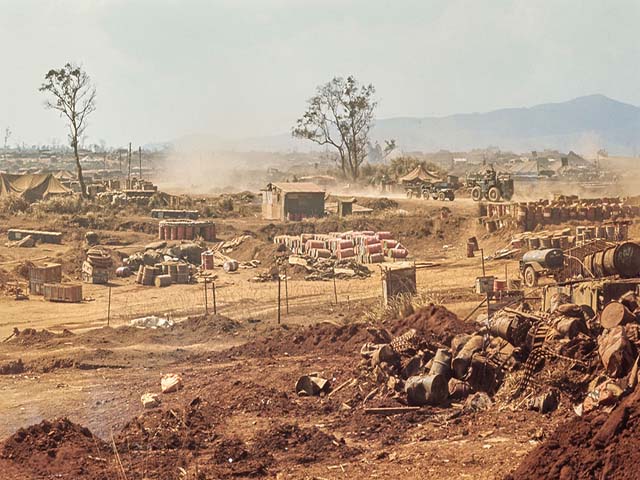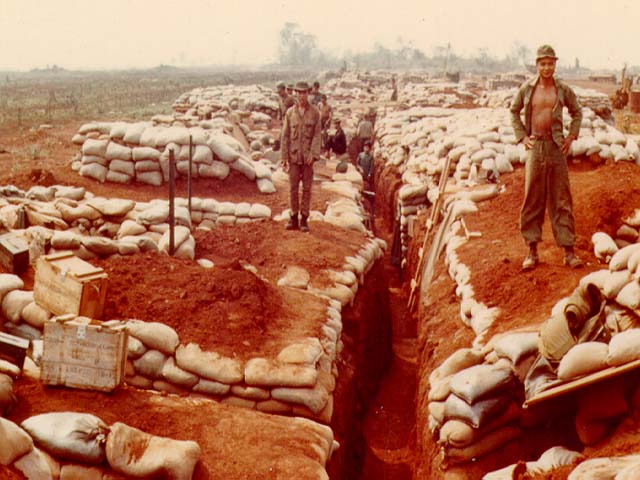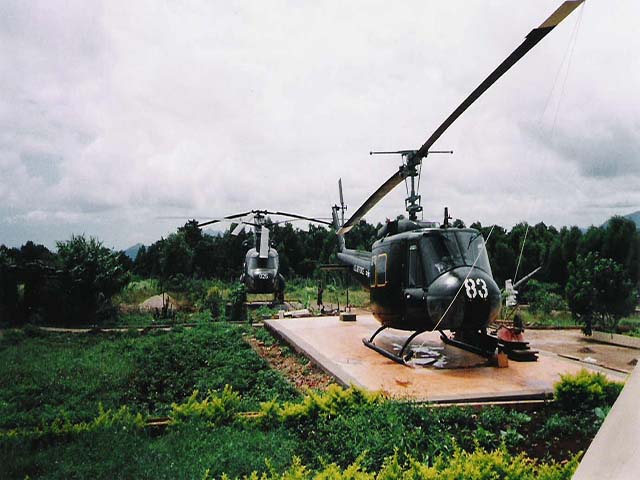The Overview of Battle of Khe Sanh
The Battle of Khe Sanh began on January 21, 1968, when forces from the People’s Army of North Vietnam (PAVN) carried out a massive artillery bombardment on the U.S. Marine garrison at Khe Sanh, located in South Vietnam near the border with Laos. For the next 77 days, U.S. Marines and their South Vietnamese allies fought off an intense siege of the garrison, one of the longest and bloodiest battles of the Vietnam War (battle of khe sanh).

Defending Khe Sanh
The U.S. military presence at Khe Sanh began in 1962, when Army Special Forces built a small camp near the village, located some 14 miles south of the demilitarized zone (DMZ) between North and South Vietnam and 6 miles from the Laotian border on Route 9, the principal road from South Vietnam into Laos.
U.S. Marines built a garrison adjacent to the Army camp in 1966. In the fall of 1967, the People’s Army of North Vietnam (PAVN) began to build up its strength in the region, and U.S. officials began to suspect that Khe Sanh would be the target of an attack.

Did you know? The number of Communist forces killed in the Battle of Khe Sanh would reach around 10,000, compared to fewer than 500 U.S. Marines killed in action.
General William Westmoreland, commander of the U.S. Military Assistance Command in Vietnam (MACV), believed that Vietnamese Communist forces had targeted Khe Sanh as part of a general effort to seize South Vietnam’s northernmost regions and put themselves in a stronger position prior to any future peace negotiations.
They had done this successfully against French colonial troops at the Battle of Dien Bien Phu in 1954, prior to obtaining independence at the Geneva peace conference.
As part of a program codenamed Operation Scotland, Westmoreland reinforced the Marine garrison at Khe Sanh—bringing the total number of troops to around 6,000—stockpiled ammunition and refurbished the airstrip at the base, all in preparation for a possible attack.
The Battle of Khe Sanh
The attack finally came on January 21, 1968, when PAVN forces began a massive artillery bombardment of Khe Sanh, hitting the base’s main store of ammunition and destroying 90 percent of its artillery and mortar rounds.
President Lyndon B. Johnson agreed with Westmoreland’s argument that the base should be held at all costs, and U.S. and South Vietnamese forces launched Operation Niagara, a major artillery bombardment of suspected locations of North Vietnamese artillery in the hills surrounding Khe Sanh.

As Johnson, Westmoreland and other officials considered Khe Sanh to be the primary target of the North Vietnamese, they largely ignored signs of a Communist buildup in more urban areas of South Vietnam.
The Tet Offensive
This proved to be a mistake, as on January 31, 1968—a date celebrated as the lunar new year, or Tet—some 70,000 North Vietnamese and Viet Cong forces launched a coordinated series of fierce attacks on more than 100 cities and towns in South Vietnam.
Known as the Tet Offensive, this aggressive operation aimed to break Army of the Republic of Vietnam (ARVN) forces, inspire rebellion among the South Vietnamese population against the regime in Saigon and drive a wedge between South Vietnam and its powerful ally, the United States.
Suddenly, the long and bitter struggle at Khe Sanh began to look like a diversionary tactic meant to tie up U.S. and South Vietnamese resources leading up to the Tet Offensive.
Impact of Khe Sanh
News reports of the Battle of Khe Sanh consistently referred to the struggle as another Dien Bien Phu, but in reality the U.S. and South Vietnamese enjoyed a much stronger position than had the French.
In addition to a fleet of helicopters and cargo planes that could resupply and reinforce the besieged Marines, they could rely on the heavy bombing capacity of the B-52 fighter planes, which dropped close to 100,000 explosives on the hills surrounding Khe Sanh over the course of the battle.
Though U.S. officials expected a full-scale attack by North Vietnamese forces on the base, it never came, and in March Westmoreland ordered Operation Pegasus, a joint Army, Marine and ARVN ground advance that relieved the base and ended the siege by mid-April, after some 77 days (battle of khe sanh).
Critics Attack U.S. War Effort
In the face of criticism that he had fallen victim to the North Vietnamese diversionary tactic, Westmoreland defended his decision to defend Khe Sanh, and claimed the battle as a victory in that it prevented the enemy from gaining control over the northwest corner of South Vietnam and inflicted heavy losses on PAVN forces.
As antiwar sentiment mounted on the home front in the wake of the Tet Offensive, the Johnson administration lost confidence in the general’s strategy of attrition and his claims of progress in the war effort.
On March 31, Johnson announced he was halting most of the bombing attacks in North Vietnam and opening peace negotiations; he also withdrew his candidacy for reelection. General Creighton W. Abrams replaced Westmoreland as MACV head in June 1968, and on July 5 he closed the U.S. Marine base at Khe Sanh.
The Battle of Khe Sanh Map
How to get The Battle of Khe Sanh?
You can get The Battle of Khe Sanh by a taxi from Quang Tri Center. But If you are in Hue City, you should book the DMZ Tour Hue from Hue to Hoi An Jeep Tour. This is the greatest way to see this place and hear the deep history of Vietnam War.

